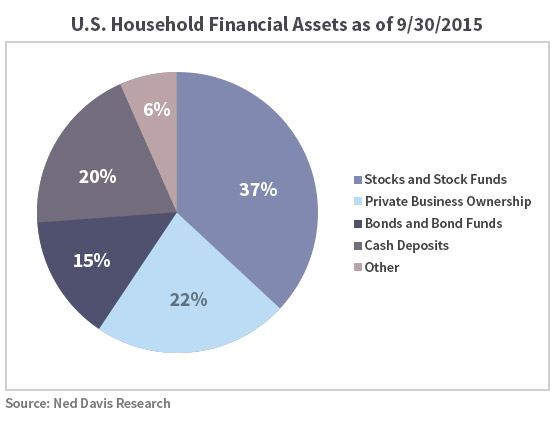By Alan McKnight
Chief Investment Officer for Regions Asset Management
When speaking with investors, the investment industry typically focuses on the public markets — stocks and bonds — and our views on the long term risks and rewards available from these assets.
It’s where we spend our days researching and strategizing, and thus, where we feel we can impart the greatest knowledge to our clients. Because of this dialogue, most individual investors also assume they should spend all of their time focusing on the same assets when discussing long term goals, needs, and total asset allocation.
In taking this approach to asset allocation, the industry, as well as individual investors, fail to consider and integrate illiquid assets - private real estate holdings, private company interests, or other holdings that can’t be valued in an easy and timely manner – into a broad investment program. Even more challenging, individual investors then begin to think of their investments in a “siloed” approach, where the private investments are neatly sequestered in one part of their balance sheet, while the public market assets are “siloed” in another separate and distinct area. These silos make for easier accounting, but fail to recognize the inherent connection and correlations between these assets.
We would recommend a more holistic approach to asset allocation that focuses on overall asset exposure and the commensurate impact on short and long term goal attainment. Within the broad context of asset allocation and an investment program, it’s critical that investors consider a 360 degree view of the risks and opportunities in the assets they own.

Given this approach, what questions should you, as an investor, ask to gain a clear understanding of his/her full balance sheet goals?
- What is my true exposure to certain sectors and industries? Example: An investor owns a small manufacturing operation that produces industrial widgets for the airline industry. The value of the company is intimately tied to the health of the economy and the transportation industry. Thus, the investor should have a keen appreciation for the weight the company makes up of the total portfolio and how it may influence public market exposures.
- How does illiquidity impact my long term goals? Example: If over 75% of my total assets are invested in raw land with significant disparities in market values depending on the economic environment, then the other assets on his/her balance sheet should reflect a higher level of liquidity to minimize the illiquidity imbalance associated.
- Are cash flow needs fully considered in the event of an illiquid asset sale? Example: An investor plans to sell his/her company at retirement. The investor currently receives not just a salary and profit sharing, but also travel and insurance reimbursement compensation. Are these cash flow needs captured in the income required from his/her investment program?
- How should natural resource royalty streams (oil, gas, and timber to name a few) be considered with regard to income needs and asset values? Example: An investor has a large royalty interest in producing oil and gas wells. The income from the royalties were much higher with $100+ oil, so how should the same assets and income streams be valued and categorized with significantly lower commodity prices?
By asking questions such as these, investors should begin to understand the tradeoff between goals, asset ownership, and illiquidity. The ensuing step should be to qualify each asset, and then map them to the goals they align to. These assets/goals should ultimately find a home in three separate portfolios: a safety portfolio, a market portfolio and an aspirational portfolio. This deeper level of diversification will ultimately raise the probability of success for a total investment program.







